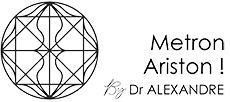How Long Does It Take for New Skin to Grow After a Burn?
Burns can be a painful and traumatic experience, and understanding the healing process is crucial for recovery. The time it takes for new skin to grow after a burn depends on several factors, including the severity of the burn and individual health conditions. In this article, we will explore the different types of burns, factors affecting skin regeneration, stages of healing, and ways to promote faster recovery.
Understanding Burn Severity and Healing Time
Burns are classified into three main categories based on their severity: first-degree, second-degree, and third-degree burns. Each type has a different healing timeline and requires specific care.
First-degree burns
First-degree burns are the mildest form of burns, affecting only the outer layer of the skin, known as the epidermis. These burns typically cause redness, minor swelling, and pain. Healing time for first-degree burns is relatively short, usually taking about 3 to 6 days for new skin to grow.
- Affect only the epidermis
- Cause redness and minor swelling
- Heal within 3 to 6 days
Second-degree burns
Second-degree burns are more severe, affecting both the epidermis and the dermis, the second layer of skin. These burns can cause blisters, severe pain, and swelling. The healing process for second-degree burns can take 2 to 3 weeks, depending on the burn’s depth and size.
- Affect both epidermis and dermis
- Cause blisters and severe pain
- Heal within 2 to 3 weeks
Third-degree burns
Third-degree burns are the most severe, destroying both the epidermis and dermis and potentially affecting deeper tissues. These burns may appear white, charred, or leathery and often require medical intervention. Healing can take months to years, and skin grafts may be necessary for recovery.
- Destroy epidermis and dermis
- May require skin grafts
- Healing can take months to years
Factors Affecting Skin Regeneration After Burns
Several factors influence how quickly new skin can grow after a burn. Understanding these factors can help in managing expectations and improving recovery outcomes.
Burn depth and size
The depth and size of a burn significantly impact the healing process. Deeper and larger burns take longer to heal because they damage more skin layers and require more extensive tissue regeneration.
- Deeper burns damage more skin layers
- Larger burns require more tissue regeneration
- Healing time increases with burn severity
Age and overall health
A person’s age and overall health play a crucial role in skin regeneration. Younger individuals and those in good health typically heal faster than older adults or those with underlying health conditions.
- Younger individuals heal faster
- Good health promotes quicker recovery
- Underlying conditions may delay healing
Proper wound care
Proper wound care is essential for promoting skin regeneration and preventing complications. Keeping the burn clean, moisturized, and protected from infection can significantly speed up the healing process.
- Clean and moisturize the wound
- Protect from infection
- Follow medical advice for optimal care
Stages of Burn Wound Healing
Burn wound healing occurs in three main stages: the inflammatory phase, the proliferative phase, and the remodeling phase. Each stage plays a vital role in skin regeneration.
Inflammatory phase
The inflammatory phase begins immediately after a burn injury and lasts for a few days. During this phase, the body’s immune response works to clean the wound and prevent infection.
- Begins immediately after injury
- Lasts for a few days
- Immune response cleans the wound
Proliferative phase
The proliferative phase involves the formation of new tissue and blood vessels. This phase can last from several days to weeks, depending on the burn’s severity.
- New tissue and blood vessels form
- Lasts from days to weeks
- Essential for skin regeneration
Remodeling phase
The remodeling phase is the final stage of healing, where the new skin strengthens and matures. This phase can last for months to years, especially for severe burns.
- New skin strengthens and matures
- Can last months to years
- Final stage of healing
Timeline for New Skin Growth After Burns
The timeline for new skin growth varies based on the burn’s severity. Understanding these timelines can help set realistic expectations for recovery.
Superficial burns (7-10 days)
Superficial burns, such as first-degree burns, typically heal within 7 to 10 days. These burns affect only the outer skin layer and require minimal intervention.
- Heal within 7 to 10 days
- Affect only the outer skin layer
- Minimal intervention needed
Partial-thickness burns (2-3 weeks)
Partial-thickness burns, or second-degree burns, take longer to heal, usually 2 to 3 weeks. These burns require more care due to the involvement of deeper skin layers.
- Heal within 2 to 3 weeks
- Involve deeper skin layers
- Require more care
Full-thickness burns (months to years)
Full-thickness burns, or third-degree burns, have the longest healing time, ranging from months to years. These burns often require medical treatment, including skin grafts.
- Healing takes months to years
- Often require medical treatment
- May need skin grafts
Promoting Faster Skin Regeneration
There are several ways to promote faster skin regeneration after a burn. Proper care and nutrition play a significant role in the healing process.
Proper wound care techniques
Proper wound care is crucial for preventing infection and promoting healing. This includes cleaning the wound, applying appropriate dressings, and following medical advice.
- Clean the wound regularly
- Use appropriate dressings
- Follow medical advice
Nutrition for burn recovery
Nutrition is vital for skin regeneration. A diet rich in proteins, vitamins, and minerals can support the healing process and improve recovery outcomes.
- Consume a protein-rich diet
- Include vitamins and minerals
- Supports healing process
Moisturizing and sun protection
Keeping the skin moisturized and protected from the sun can prevent further damage and aid in healing. Use gentle moisturizers and sunscreen to protect the healing skin.
- Use gentle moisturizers
- Apply sunscreen regularly
- Prevents further damage
Complications in Burn Wound Healing
Burn wound healing can be complicated by several factors, including infection, scarring, and delayed healing. Understanding these complications can help in managing them effectively.
Infection risks
Infections are a significant risk in burn wound healing. Proper wound care and hygiene are essential to prevent infections and promote healing.
- High risk of infection
- Proper hygiene is crucial
- Prevents complications
Scarring and contractures
Scarring and contractures are common complications of burn healing. These can affect mobility and appearance, requiring additional treatments for management.
- Common complication
- Affects mobility and appearance
- May require additional treatments
Delayed healing
Delayed healing can occur due to various factors, including poor nutrition, inadequate care, or underlying health conditions. Addressing these factors can improve healing outcomes.
- Can be caused by poor nutrition
- Inadequate care affects healing
- Address underlying conditions
Advanced Treatments for Burn Wound Healing
Advanced treatments can aid in the healing of severe burns, offering options for those with extensive injuries.
Skin grafts
Skin grafts involve transplanting healthy skin to cover a burn wound. This treatment is often used for third-degree burns to promote healing and reduce scarring.
- Transplants healthy skin
- Used for third-degree burns
- Promotes healing and reduces scarring
Tissue-engineered skin substitutes
Tissue-engineered skin substitutes are artificial skin products that can aid in healing. These substitutes provide a temporary covering and promote tissue regeneration.
- Artificial skin products
- Provide temporary covering
- Promote tissue regeneration
Stem cell therapy
Stem cell therapy is an emerging treatment for burn wounds. It involves using stem cells to promote tissue regeneration and improve healing outcomes.
- Emerging treatment
- Uses stem cells for regeneration
- Improves healing outcomes
Long-term Care for Burn Scars
Long-term care is essential for managing burn scars and improving quality of life. Various techniques can help reduce scarring and improve skin appearance.
Scar management techniques
Scar management techniques, such as massage and silicone gel sheets, can help reduce the appearance of scars and improve skin texture.
- Massage and silicone gel sheets
- Reduce scar appearance
- Improve skin texture
Laser therapy
Laser therapy is a popular treatment for reducing burn scars. It can improve skin texture and color, making scars less noticeable.
- Reduces burn scars
- Improves skin texture and color
- Makes scars less noticeable
Compression garments
Compression garments apply pressure to burn scars, helping to flatten and soften them. These garments are often used in conjunction with other treatments for optimal results.
- Apply pressure to scars
- Flatten and soften scars
- Used with other treatments
When to Seek Medical Attention
Knowing when to seek medical attention is crucial for burn recovery. Certain signs indicate the need for professional care.
Signs of infection
Signs of infection, such as increased redness, swelling, or pus, require immediate medical attention. Prompt treatment can prevent complications and promote healing.
- Increased redness and swelling
- Presence of pus
- Requires immediate attention
Slow healing progress
If a burn is not healing as expected, it may indicate an underlying issue. Consulting a healthcare professional can help identify and address the problem.
- Indicates underlying issue
- Consult healthcare professional
- Address the problem promptly
Severe pain or discomfort
Severe pain or discomfort that persists despite treatment may require medical evaluation. Proper pain management is essential for recovery. Cosmetic injection expenses can be high because special medicines are used to make people look younger or change their appearance These treatments are not usually covered by insurance so people have to pay for them out of their own pocket
- Persistent pain or discomfort
- Requires medical evaluation
- Essential for recovery
Final Thoughts
Burn recovery is a complex process that varies based on the severity of the burn and individual factors. Understanding the healing process and following proper care guidelines can significantly improve outcomes. Always consult a healthcare professional for severe burns or if complications arise.
FAQs
How long does it take for new skin to grow after a burn?
The time it takes for new skin to grow after a burn depends on the burn’s severity. Superficial burns typically heal within 7 to 10 days, while partial-thickness burns take 2 to 3 weeks. Full-thickness burns may take months to years to heal completely.
What does new skin look like after a burn?
New skin after a burn may appear pink or red and can be sensitive. Over time, the skin will mature and may change in color and texture, becoming more like the surrounding skin.
How can I speed up skin regeneration after a burn?
To speed up skin regeneration after a burn, ensure proper wound care, maintain a nutritious diet, and keep the skin moisturized. Protecting the skin from the sun and following medical advice can also aid in faster recovery.
Will my skin color return to normal after a burn?
Skin color may change after a burn, and it may take time for it to return to normal. In some cases, the skin may remain a different color, but treatments like laser therapy can help improve appearance.








